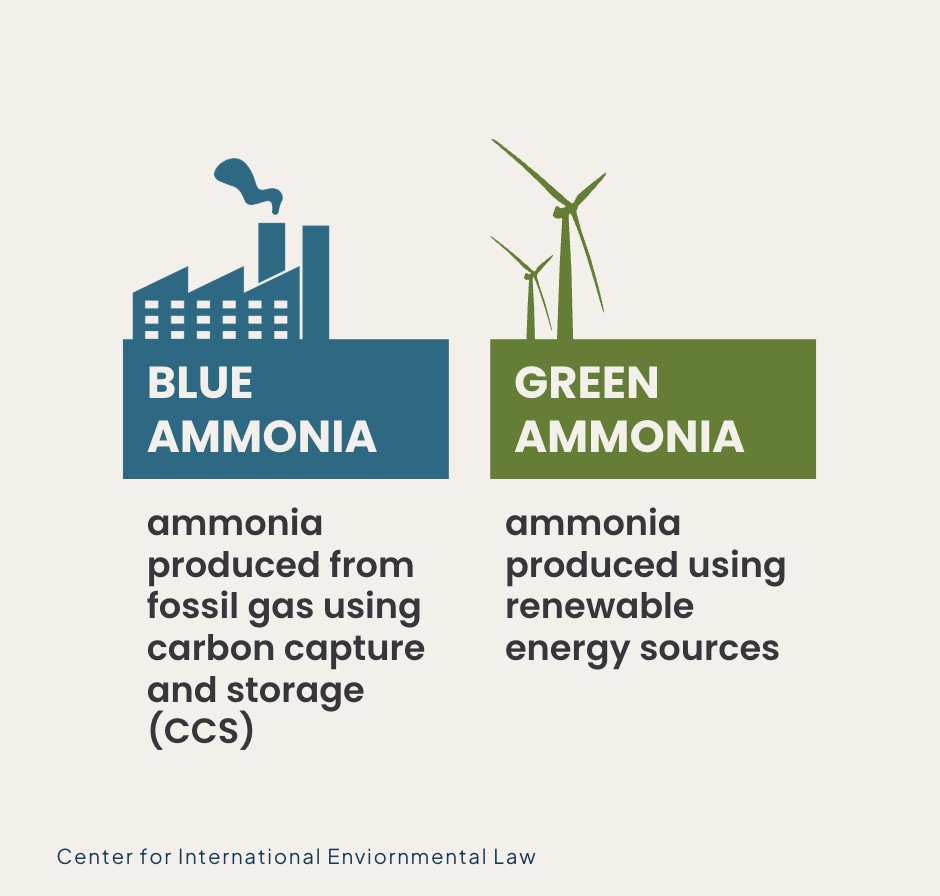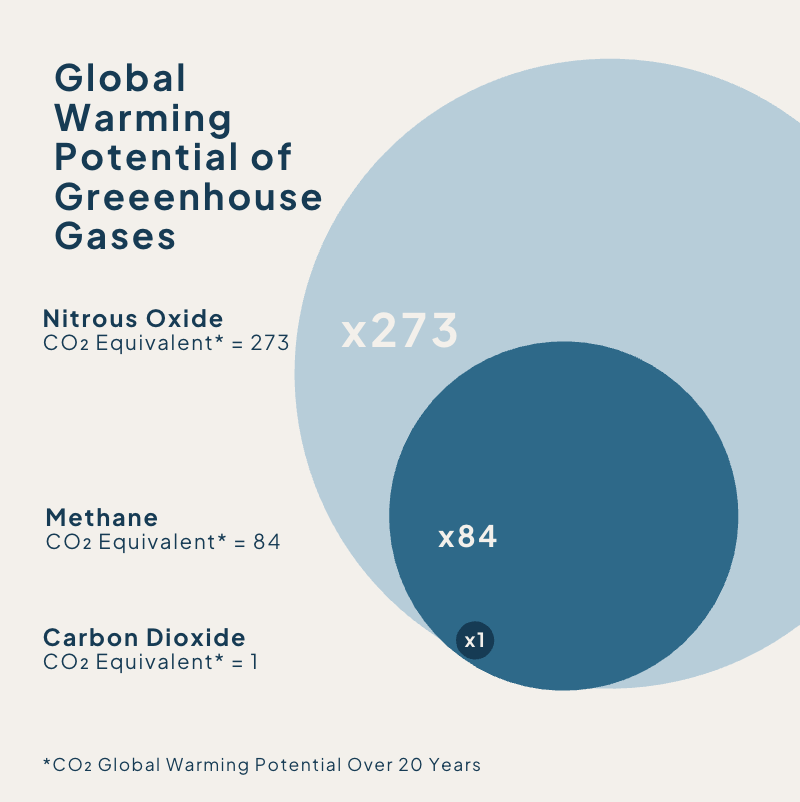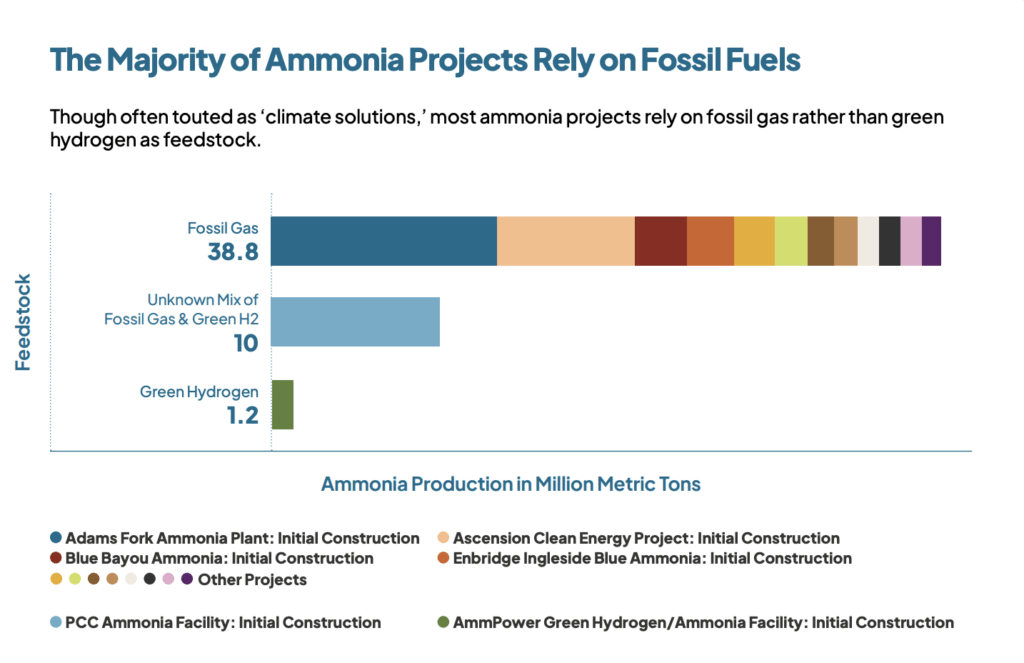Published on April 8, 2025
By Taylor Hodge, US Agrochemicals and Fossil Fuels Campaigner, and Lindsey Jurca Durland, Senior Communications Campaign Specialist at the Center for International Environmental Law.
Based on an article on ammonia by Lisa Tostado, Agrochemicals and Fossil Fuels Campaigner at the Center for International Environmental Law, originally published in the November 2024 issue of Air & Waste Management Association’s Magazine for Environmental Managers.
As shipowners and the maritime industry consider alternatives to fossil fuels to power commercial shipping, industry analysts are betting on blue ammonia as a climate-friendly solution. But beneath the industry’s greenwashed claims lies a fuel that could be just as bad — or even worse — than the conventional shipping fuels it is meant to replace.
Ammonia projects are multiplying, with nearly all proposed expansions in the US relying on fossil gas. They also stand to collect hefty government subsidies. While companies claim that adding carbon capture and storage (CCS) makes blue ammonia a low-carbon option, the reality is far different.
Instead of cutting emissions, blue ammonia locks in fossil fuel dependence, adds methane and nitrous oxide pollution, and threatens environmental and community health. And with no 100 percent-ammonia-powered ships operating today, its climate benefits remain purely speculative.
This is why betting on blue ammonia is not just short-sighted — it’s a dangerous distraction from the urgent need to phase out fossil fuels and implement real climate solutions.
The Fossil Fuel Backbone of Ammonia Production
 Ammonia is not a clean fuel. Today, ammonia is most commonly used in agriculture — with around 70 percent of global ammonia output used for fertilizers. But nearly all ammonia currently produced is derived from fossil fuels, making it a significant emitter of carbon dioxide (CO2). Ammonia is responsible for approximately 1.8 percent of global CO2 emissions, producing more per metric ton than cement or steel.
Ammonia is not a clean fuel. Today, ammonia is most commonly used in agriculture — with around 70 percent of global ammonia output used for fertilizers. But nearly all ammonia currently produced is derived from fossil fuels, making it a significant emitter of carbon dioxide (CO2). Ammonia is responsible for approximately 1.8 percent of global CO2 emissions, producing more per metric ton than cement or steel.
Ammonia production relies heavily on fossil fuels — both as a feedstock and as an energy source — with 72 percent made from fossil gas and 26 percent from coal.
Blue ammonia — which is produced from fossil gas using CCS — is being touted as a climate-friendly alternative for shipping despite significant flaws and evidence that it won’t deliver meaningful climate benefits.
The Blue Ammonia Myth: Why CCS Won’t Solve Ammonia’s Climate Problem
While conventional ammonia production offers nearly no carbon advantage for shipping, major ammonia producers claim that adding carbon capture can ‘decarbonize’ the process. Carbon capture is a process designed to collect CO2 generated by high-emitting activities, such as ammonia production, and either transport the captured carbon for use (the “U” in CCUS) or store the carbon underground (the “S” in CCS). However, blue ammonia and CCS both face significant challenges.
CCS — and therefore blue ammonia — is ineffective at eliminating CO2 emissions. Despite years of research and subsidies, there is no evidence that commercial-scale CCS projects capture anywhere near the 90 to 95 percent efficacy touted by the fossil fuel industry. In fact, a 2023 analysis of commercial-scale facilities operating with CCS found that not a single one captured even 80 percent of the CO2 produced, with most capturing far less. Far from being a silver bullet, CCS adds another layer of emissions through the energy-intensive process needed to power its own infrastructure.
Even if CCS achieved claimed capture rates, blue ammonia still presents climate concerns as it does nothing to address methane and nitrous oxide emissions — two greenhouse gases far more potent than CO2.
Methane and Nitrous Oxide: The Hidden Climate Cost of Blue Ammonia
 Methane (fossil gas) leakage is a major issue — not just in ammonia production but also upstream during fossil gas extraction. Ammonia plants relying on fossil fuels, particularly gas, emit methane —a potent greenhouse gas with 84 times the warming potential of CO2 over twenty years, making even small leaks a massive climate risk.
Methane (fossil gas) leakage is a major issue — not just in ammonia production but also upstream during fossil gas extraction. Ammonia plants relying on fossil fuels, particularly gas, emit methane —a potent greenhouse gas with 84 times the warming potential of CO2 over twenty years, making even small leaks a massive climate risk.
A 2019 study suggests that methane emissions from the US fertilizer industry, the country’s largest ammonia producer, could be 140 times higher than the industry’s own estimates.
Additionally, if ammonia is used as a maritime fuel, its combustion could release nitrous oxide, a greenhouse gas 273 times more potent than CO2.
Blue Ammonia and CCS Create New Problems And Delays Necessary Fossil Fuel Phaseout

In addition to being ineffective, CCS faces significant challenges, including limited storage site availability, accessibility, and public acceptance. Concerningly, carbon capture additions would increase overall emissions if the captured carbon is not stored underground, but is instead used for industrial processes or to extract more fossil fuels. In fact, most captured CO2 has been used for enhanced oil recovery — a process that uses CO2 to extract even more oil, undermining any purported climate benefits.
Blue ammonia isn’t just risky for the climate — it’s risky for communities. Blue ammonia does not reduce harmful air pollutants, and may actually result in additional emissions of harmful air pollutants, particularly from the use of amine-based chemicals in CCS. From toxic air pollutants to hazardous pipelines, the collateral damage of this “solution” would fall hardest on already overburdened communities. The US is the epicenter of ammonia expansion — propped up by hefty government subsidies — with 95 percent of the planned production expansions relying on fossil gas.
Given the long lifespan of chemical plants, investing in blue ammonia infrastructure risks locking in fossil fuel dependence for decades, putting climate targets out of reach.
Real Climate Solutions for Shipping Are Fossil-Free
Serious questions remain about ammonia’s viability as a shipping fuel — from its climate impact to concerns about its toxicity, safety, and potential detrimental impacts on marine environments. An ammonia spill in the ocean, according to one expert, “could potentially sterilise cubic miles of ocean.”
Blue ammonia’s climate impact may be even worse than conventional shipping fuels — an alarming prospect given that ammonia-ready vessels are currently the most popular alternative fuel ships on order. Projections suggest that by mid-century, blue ammonia will supply 76 percent of ammonia used in shipping, though blue currently only makes up around one percent of global ammonia production.
More promising strategies to cut maritime emissions include alternative technologies (e.g., wind-assisted propulsion), operational changes (e.g., slower speeds), and — most critically, reducing maritime shipping altogether — especially given that 40 percent of global shipping is dedicated to transporting fossil fuels.
Betting on blue ammonia isn’t just short-sighted — it’s dangerous. If we want to avoid the worst impacts of climate change, we must reject blue ammonia’s false promise.



